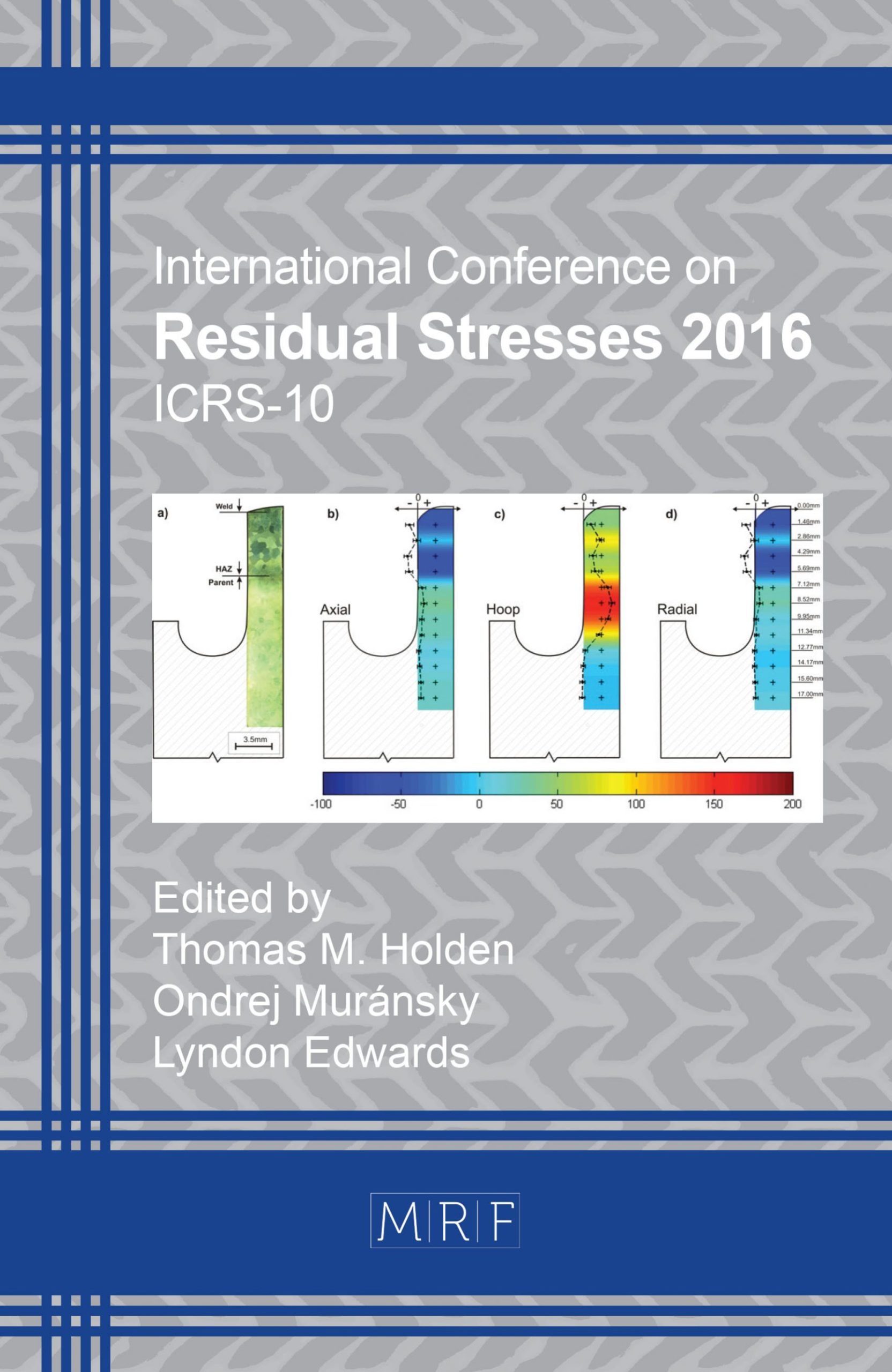Local Residual Stress Analysis on Deep Drawn Cups by Means of the Incremental Hole-Drilling Method
S. Schuster, J. Pagenkopf, J. Gibmeier
download PDFAbstract. In addition to residual stresses sheet metal forming induces characteristic crystallographic texture, hence, the material behavior is anisotropic. In general, the standard evaluation procedures of residual stress analysis techniques are limited to isotropic material states. In the present paper deep drawn steel cups of dual phase steel DP600 are analyzed by using a recently proposed calibration approach for residual stress analysis by means of the incremental hole-drilling method for highly textured material states. It is based on the differential method, which is enhanced with four case specific calibration functions. The multiple case specific calibration functions are determined by means of finite element simulations using the orientation distribution function (ODF) in combination with Hill’s assumption and single crystal elastic constants of iron to calculate the effective elasticity tensor to account for elastic anisotropy. Supplementary, the deep drawing process is simulated using a finite element model based on the Hill48 yield criterion. Finally, the comparison shows that the numerical results are in satisfactory agreement to the experimental data.
Keywords
Incremental Hole-drilling Method, Crystallographic Texture, Multiple Case-Specific Calibration Functions, Deep Drawing
Published online 12/22/2016, 6 pages
Copyright © 2016 by the author(s)
Published under license by Materials Research Forum LLC., Millersville PA, USA
Citation: S. Schuster, J. Pagenkopf, J. Gibmeier, ‘Local Residual Stress Analysis on Deep Drawn Cups by Means of the Incremental Hole-Drilling Method’, Materials Research Proceedings, Vol. 2, pp 187-192, 2017
DOI: http://dx.doi.org/10.21741/9781945291173-32
The article was published as article 32 of the book Residual Stresses 2016
![]() Content from this work may be used under the terms of the Creative Commons Attribution 3.0 licence. Any further distribution of this work must maintain attribution to the author(s) and the title of the work, journal citation and DOI.
Content from this work may be used under the terms of the Creative Commons Attribution 3.0 licence. Any further distribution of this work must maintain attribution to the author(s) and the title of the work, journal citation and DOI.
References
[1] E. Macherauch, P. Müller, Das sin2ψ-Verfahren der röntgenographischen Spannungsmessung, Z angew. Physik, 13 (1961) 340-345.
[2] V. Hauk, G. Vaessen, Eigenspannungen in Kristallitgruppen texturierter Stähle, Z. Metallkde., 76 (1985) 102-107.
[3] H. Behnken , V. Hauk, Berechnung der röntgenographischen Spannungsfaktoren texturierter Werkstoffe – Vergleich mit experimentellen Ergebnissen, Z. Metallkde., 82 (1991) 151-158.
[4] G. S. Schajer, Measurement of non-uniform residual stresses using the hole-drilling method. Part I – Stress calculation procedures, J. Eng. Mater. Technol., 110 (1988) 338–343. http://dx.doi.org/10.1115/1.3226059
[5] T. Schwarz, H. Kockelmann, Die Bohrlochmethode – ein für viele Anwendungsbereiche optimales Verfahren zur experimentellen Ermittlung von Eigenspannungen, Messtech. Briefe, 29 (1993) 33–38.
[6] S. Schuster, J. Gibmeier, Residual stress analysis of strongly textured materials by means of the incremental hole-drilling method – Survey on the application limits, Mater. Test., 56 (2014) 915-922. http://dx.doi.org/10.3139/120.110651
[7] S. Schuster, J. Gibmeier, Incremental hole-drilling for residual stress analysis of strongly textured material states – A new calibration approach, Exp. Mech., 56 (2016) 369-380. http://dx.doi.org/10.1007/s11340-015-0104-3
[8] R. Hill, The elastic behaviour of a crystalline aggregate, Proc. Phys. Soc. A, 65 (1952) 349-354. http://dx.doi.org/10.1088/0370-1298/65/5/307
[9] Landolt-Börnstein, Group III Condensed Matter, Table 3, Cubic system. Elements, 29a:14, Springer, 1992.
[10] R. Hill, A theory of the yielding and plastic flow of anisotropic metals, Proc. R. Soc. Lond. A, 193 (1948) 281-297. http://dx.doi.org/10.1098/rspa.1948.0045































